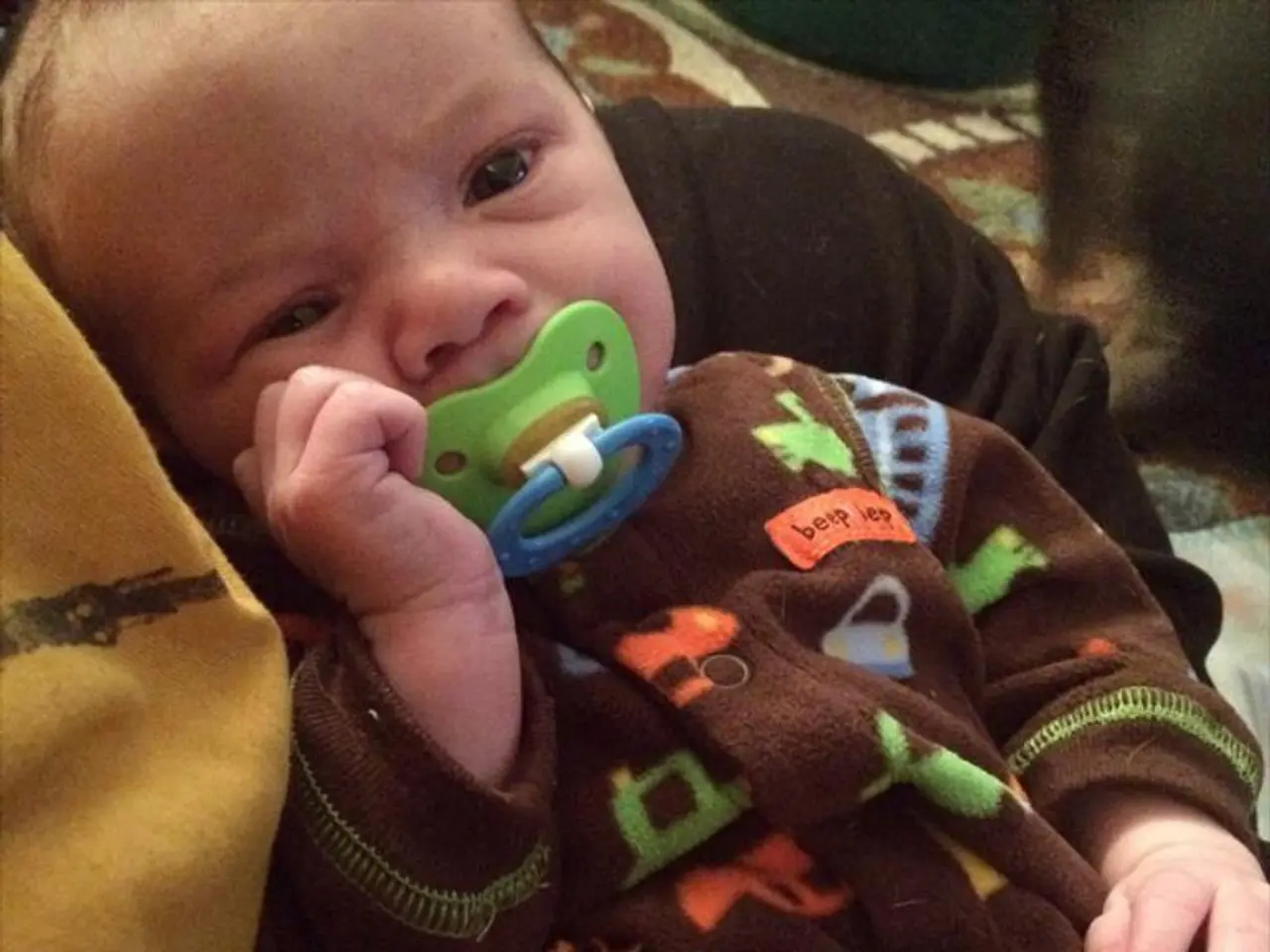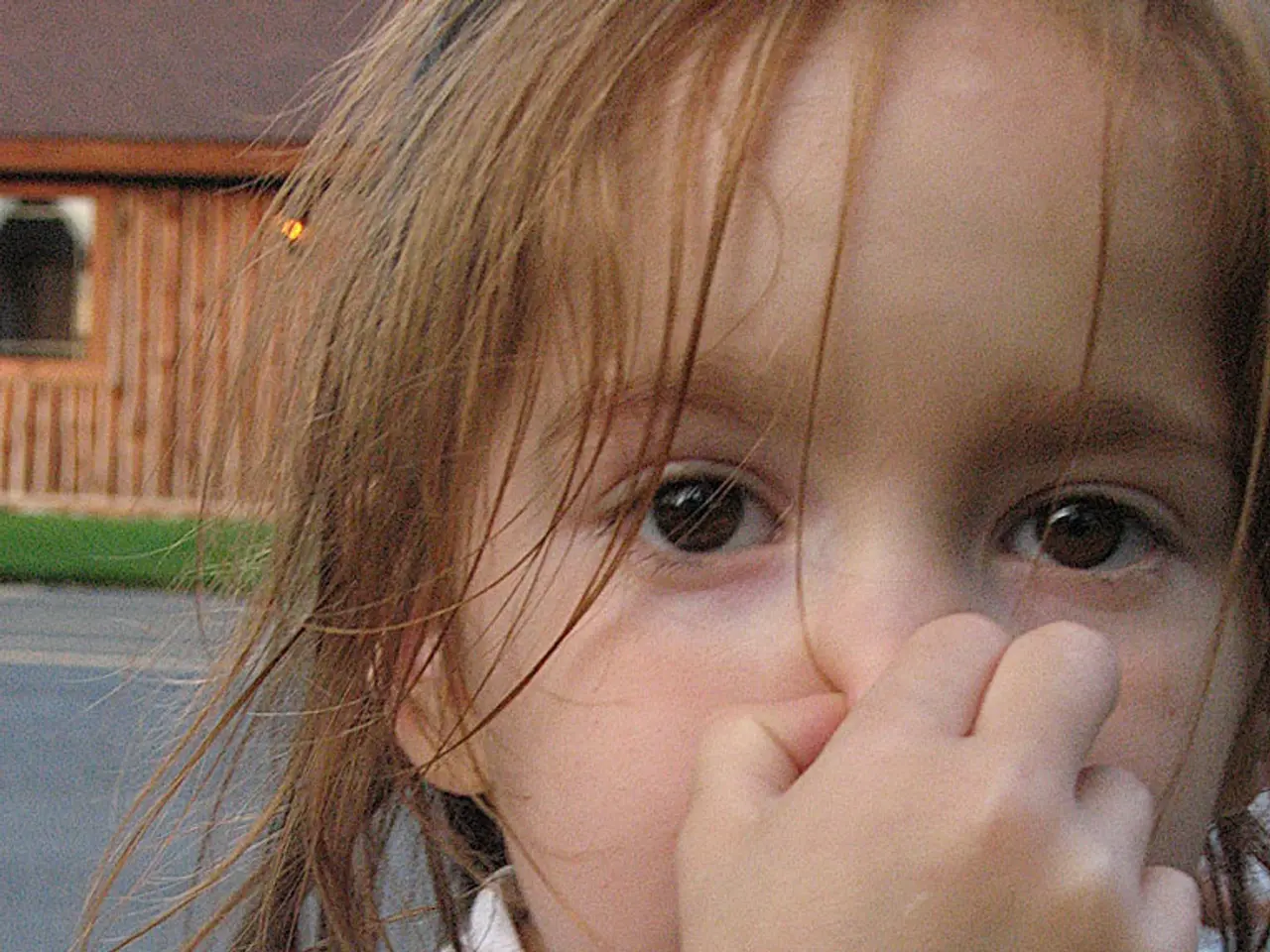Nipple Irritation: Causes, Solutions, and Reliefs
In the world of breastfeeding, cracked nipples can be a common and uncomfortable issue for many parents. However, with the right strategies and care, it is possible to prevent and treat this problem effectively.
The most crucial step in preventing and treating cracked nipples is ensuring a proper latch. A good latch minimizes nipple trauma and pain by allowing your baby to take in enough of the areola, not just the nipple, during feeding. If you struggle with latching, seek help from a lactation consultant to improve technique and reduce nipple damage[1][2].
Prevention tips include supporting a good latch, breastfeeding frequently, avoiding biting, using nipple care products, wearing loose clothing and bras, maintaining hygiene, and seeking help from professionals[1][2][5]. To ensure a good latch, help your baby open wide and latch deeply, with the lower lip and chin touching the areola first[1][2]. Regularly changing nursing pads and washing hands before feeding or pumping can also help prevent infections that can worsen nipple pain[5].
When it comes to treatment, applying lanolin cream or nipple butter after each feeding soothes and protects the nipple skin while it heals[3][4]. Massaging a few drops of your own breast milk onto the nipple after feeding can also help, as breast milk has natural healing properties[3]. If you are experiencing severe pain, bleeding, or extreme discomfort, contact a lactation consultant or healthcare provider promptly[2][5].
By focusing on proper latch, nipple care with moisturizing creams, hygiene, and support from professionals, cracked nipples can be effectively prevented and treated, allowing a more comfortable and successful breastfeeding experience[1][2][3][5].
It is important to remember that cracked nipples are most likely to occur in the first month postpartum and can result from chafing during sports or from breastfeeding[4]. Using a bottle to feed a baby before trying breastfeeding may increase the chance of cracked nipples[4].
In conclusion, with the right knowledge and care, cracked nipples during breastfeeding can be managed effectively. Seek help from professionals when needed, and remember that a good latch is key to a comfortable and successful breastfeeding experience.
[1] La Leche League International. (2021). The Womanly Art of Breastfeeding. Amherst, WI: La Leche League International. [2] American Academy of Pediatrics. (2012). Breastfeeding and the Use of Human Milk. Pediatrics, 130(3), e827-e841. [3] Newman, J. L., & Pitman, G. (2018). The Lactation Consultant's Guide: Breastfeeding Management from the First Days to Weaning. Elsevier. [4] World Health Organization. (2018). Infant and Young Child Feeding. Retrieved from https://www.who.int/nutrition/publications/infant-feeding/9789240031472/en/ [5] BabyCenter. (2021). Cracked Nipples: Prevention and Treatment. Retrieved from https://www.babycenter.com/0_cracked-nipples-prevention-and-treatment_10340745.bc [6] Mayo Clinic. (2021). Cracked nipples during breastfeeding. Retrieved from https://www.mayoclinic.org/healthy-lifestyle/infant-and-toddler-health/expert-answers/cracked-nipples-during-breastfeeding/faq-20058073
- Postnatal health-and-wellness for mothers involves paying close attention to skin-care, with the use of moisturizing creams or nipple butter to soothe and protect cracked nipples during breastfeeding.
- In the realm of women's health, mental health is equally important, and seeking help from professionals is vital when experiencing severe pain, bleeding, or extreme discomfort during breastfeeding.
- Pursue a fitness-and-exercise routine after childbirth, but be cautious to avoid chafing that could contribute to cracked nipples within the first month postpartum.
- Embracing the help of lactation consultants, healthcare providers, and support groups can contribute significantly to improving parenting skills and ensuring a successful breastfeeding experience.




